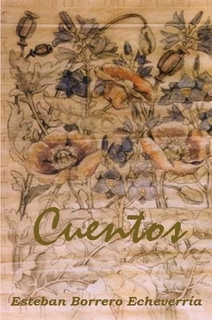3.2.3 The literary work of Esteban Borrero (1849 – 1906), narrative texts

Esteban Borrero’s life and literary work, due to its limited knowledge, merits a more detailed study. A doctor, educator, journalist, and independence fighter, he was a consistent intellectual who had to make his way through poverty and human suffering; but he did so by cultivating his intellect in various scientific and cultural spheres and, most difficult for the time, without compromising on moral or ideological grounds.
Although it is true that he suffered the oblivion of many of his contemporaries and to a certain extent of posterity, prominent figures of Cuban culture bore witness to his worth, among them Julián del Casal and Enrique José Varona.
His narrative work begins with the publication of “Calófilo” in the Revista de Cuba in 1879. This text reveals the author’s inherent pessimism – later heightened by tragic iterations of death – his evasive behavior on various levels, akin to the spirit of modernism, and his own attraction to death, through suicide, a decision he finally made in 1906, perhaps because he was unable to cope with the death of his loved ones and the substantial loneliness of the final stages of his life.
He also published “Cuestión de Monedas,” perhaps as part of the volume “Lecturas de Pascuas,” published in 1899 with illustrations by his daughters, Dulce María and the now deceased Juana Borrero.
He had previously written the narrative text “Aventura de las hormigas” (Adventure of the Ants), about which Casal would later express (before publishing “El circoncantada” (The Enchanted Deer), after Casal’s death): “His masterpiece in prose, both in form and content, seems to me to be La aventura de las hormigas (The Adventure of the Ants), many chapters of which have been published in the Revista Cubana (Cuban Magazine). It is a satirical work superior to L’ Inmortel (The Immortal) by Alfonso Daudet, due to the breadth of its subject matter, the way it is developed, and the knowledge revealed within its pages. Cervantes or Voltaire would have signed some passages in this profound, bitter, and original book.”
One of his most significant political texts was the one he published in 1905, entitled “The Enchanted Deer.” The text, filled with scholarly references that distract the reader’s attention, is satirical in nature and establishes a clear analogy between the attempt to capture a deer and the desire for freedom, later thwarted by American intervention. A fragment serves to illustrate this point:
“…they then asked for help from a large neighboring nation who were said to have caught their deer years before, and they invited them to help them, for the love of hunting, to catch the one they had vainly pursued for almost half a century, and without which, as they loudly declared, they could not live. The powerful neighbors did not immediately lend themselves to this purpose, but eventually, dismayed by the great agitation that reigned on the island, very close to them, and by the noise of the islanders’ raids that did not let them sleep in peace, they resolved to agree (…) Now masters of the territory, the wise and shrewd allies of a day, naturally imposed on the island their government, industry, customs and language…”
In addition to these texts, his educational vocation led him to conceive the title “The Children’s Friend,” which served for a long time as material for primary education. In its prologue, he advocates the development of values alongside knowledge, and throughout the body of the text, he expresses the idea of the importance of virtue, even above knowledge; although he firmly believes in the possibility of reconciling the two, as he did throughout his life.








